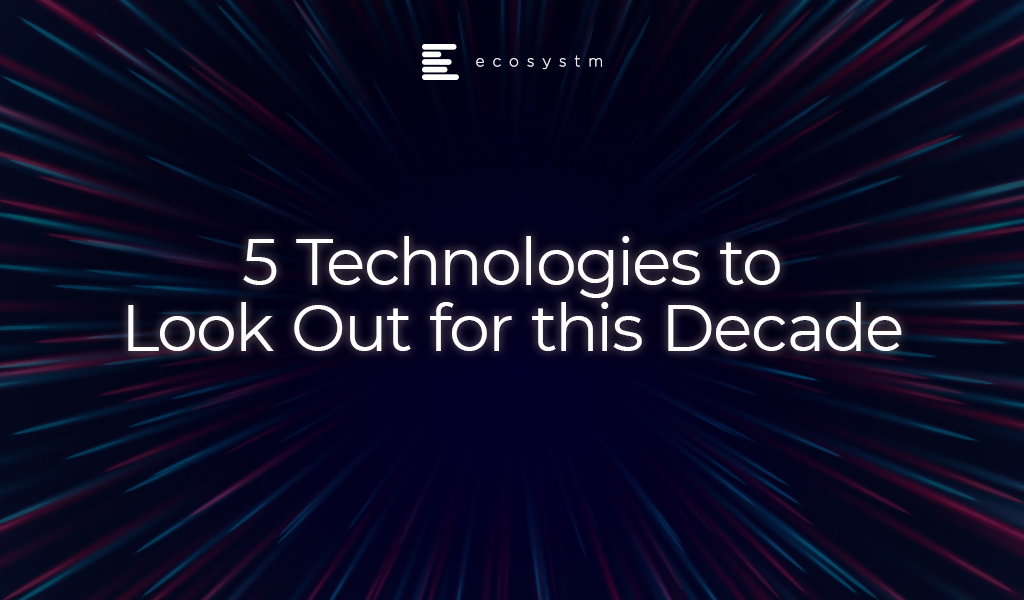
We can safely bet that in the decade taking us to 2030, technology will continue to impact and shape our world. Ecosystm has already predicted the top technology trends for 2020 (AI, Cloud, Cybersecurity, IoT). It is time to look beyond the year and see what 2030 has in store for us. There is a distinct possibility that there will be newer technologies in future that we are yet to hear of, waiting at the threshold to disrupt the existing tech space. Also by 2030, there will be many technologies that are considered futuristic today that will have become mainstream. Let us explore some of them.
Computing Technology
Quantum computing has been promising to take computing beyond current limits – going beyond bits to qubits. Qubits represent atoms, ions, photons or electrons and their respective control devices that are working together to act as computer memory and processor. It has the potential to process exponentially more data than current computers.
Even with various technology providers such as Google, IBM, AWS and Microsoft having announced their quantum computing innovations, it does not appear to be nearly enough to disrupt computing yet. The race to demonstrate the first usable quantum computer is on and start-ups such as Rigetti are challenging the established players. Whether or not the vision we have of quantum computers is fully realised, it will definitely bring in a new breed of computers with advanced processors capable of handling data, million times faster than today’s supercomputers.
Technology providers and government research organisations will continue the R&D initiatives to meet quantum’s real-world potential. Over the next decade, quantum computing applications are set to impact scientific research and exploration, including space exploration and materials science. Quantum computing will also impact us in our everyday lives enabling better weather forecasting and personalised healthcare.
Storage Technologies
Cloud storage has dominated most of the previous decade, enabling real-time access to data for both consumers and enterprises. The current storage technologies are reaching the verge of their theoretical storage capacity, given the amount of data we generate. Researchers continue to push the envelope when it comes to capacity, performance, and the reduction of the physical size of storage media. Some storage technologies of the future that have the potential to become mainstream are:
DNA Data storage
DNA stores the ‘data’ for every living organism and one day it could be the ultimate hard drive! DNA data storage consists of long chains of the nucleotides A, T, C and G – which are the building blocks of our DNA chains. DNA storage and computing systems use liquids to move molecules around, unlike electrons in silicon-based systems. This enables the stored data to be more secure and potentially allows an almost infinite storage lifespan. Researchers from Microsoft and the University of Washington have demonstrated the first fully automated system to store and retrieve data in manufactured DNA – a key step in taking the technology out of the realms of theory and into reality. The technology is still too expensive and requires new engineering solutions for it to be viable in the near future. However, there are several research organisations and start-ups out there working on creating synthetic DNA – data storage is seen as one of the many applications of the technology.
Glass Data storage
5D Glass Discs are being researched and experts say that they could store 3000x more data than CDs with a span of 13.8 billion years. The discs are made out of nanostructured glass, and the data is stored and retrieved using femtosecond laser writing. The discs are made by a laser that makes microscopic etchings in nano glass. The University of Southampton has developed the highest storage efficiency in a data storage device to date. Microsoft’s Project Silica has developed a proof of concept for its quartz glass storage in partnership with Warner Bros, storing the 1978 classic movie, Superman on a palm-size glass disc.
Nanotechnology
Nanotechnology is the science of understanding and manipulating materials on a nanometre scale. It has the potential to create the ultimate IoT sensors. Nanotechnology is already being used in the production of some microprocessors, batteries, computer displays, paints and cosmetics. But this really is just the beginning of a nano revolution.
The most researched nanotechnology applications are probably in medical science. By injecting or implanting tiny sensors, detailed information can be gathered about the human body. Innovations in implantable nanotechnology will grow and we will see more applications and innovations such as Smart Dust – a string of smart computers each smaller than a grain of sand. They can arrange themselves in nests in specified body locations for diagnostics or cure. The focus is not only on early detection but also on storing encrypted patient information. MIT is working on a nanotechnology application which involves nanoparticles or tiny robots powered by magnetic fields for targeted drug delivery.
Healthcare is not the only industry where nanotechnology will become mainstream. Materials science will see huge adoption and development of nanotechnology applications, this will drive innovation even in wearable devices and smart clothing. Nanomaterials will be used for monitoring in manufacturing, power plants, aircrafts and so on.
Printing Technologies
Astonishingly, it has been nearly 40 years since 3D printing technology was conceptualised. In the last few years, there has been rapid adoption in prototyping using 3D printers in manufacturing and construction. There has also been considerable research applications such as printing food and replacement organs. For example, companies have already demonstrated that they can create 3D prototypes of human liver tissue patches and implant them in mice.
4D printing will be the next step. With 4D printing, we can change shapes of 3D-printed objects upon stimuli from specific environmental conditions, such as temperature, light or humidity. Although the 4D printing technology is still in the R&D phase, this technology of the future has huge implications in the applications of engineering, manufacturing and construction. For instance, 4D printed bricks could change shape and size when placed alongside other bricks on the wall giving us better insights on how to protect property from natural disasters.
Connectivity Technologies
The world is becoming increasingly connected. Access to fast and reliable Internet is one of the many reasons for economic and social progress. There is constant R&D on a more seamless connectivity option. Industry giants are coming up with solutions to connect people in remote areas – such as providing emergency connectivity through helium balloons. Facebook’s Internet.org intends to provide universal connectivity using drones, low-Earth orbit and geosynchronous satellites. It is easy to predict that in 2030 everyone will have connectivity. While we are discussing the full impact of 5G, China’s Ministry of Science and Technology has already announced that they are embarking on R&D on 6G – more suited to a world where IoT becomes mainstream.
Li-Fi Technology
Li-Fi technology (Light Fidelity) works on visible light communications which sends data at a much higher speed. As we look for lower latency and higher speed, Li-Fi may very well be the technology that becomes mainstream in 2030. It is a wireless optical networking technology that uses LEDs for data transmission. In the lab, Li-Fi applications have reached transfer speeds of 10 Gbps, faster than the Wi-Fi 6 router. Li-Fi is being pegged as the network technology that will finally enable the true Edge. The recent Aircraft Interiors Expo (AIX) showcased a Li-Fi application that supported 40 Mbps transmissions and streamed HD content from a visible passenger service unit (PSU).
Ecosystm will continue to scan the horizon for newer technologies that can potentially disrupt the already disruptive tech world.
What do you think are the technologies of the future that will shape our lives in this decade? Tell us in your comments.






